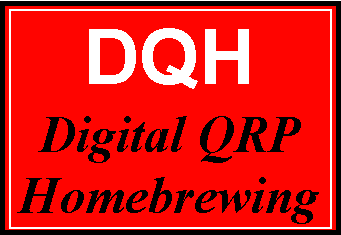 Digital
QRP BreadBoard
Digital
QRP BreadBoard  Digital
QRP BreadBoard
Digital
QRP BreadBoard |
|
Back
to
|
PROJECT DESCRIPTION The Digital QRP BreadBoard is a general-purpose QRP accessory that can be used on the operating bench and in the radio shack in a variety of ways. Approximately 6" x 9" x 1.5" in size, this project contains a number of peripherals that QRPers find useful in applications around the shack – an LCD, shaft encoder, DDS chip, audio amplifier, RS-232C serial port, general purpose I/O buffers, and a daughterboard expansion port all provide convenient design flexibility. You'll be able to download new software from this website and reprogram your Digital BreadBoard, allowing it to serve as a memory keyer, an audio filter, a keyboard-driven data terminal, a controller for your HF rig, a frequency counter, and more. Sharp readers will glean that we'll even be able to make an inexpensive portable PSK31 controller with the DSP daughterboard to be introduced in a near-future installment of the Digital BreadBoard project. The
Microcontroller Programming Considerations But getting the software program into the device is often a concern for microcontroller homebrew enthusiasts due to the expense of the "programmer". Oftentimes it's necessary to purchase a $100-or-more programming board from the manufacturer that will allow you to burn your custom software into the controller's flash memory. In many cases one is able to homebrew this programmer (as in the case of the PIC devices), however this is yet another project that must be done before getting to the fun part of experimenting with your intended project. Our 68HC908AB32 device has the ability to be in-circuit programmed, which means that a conventional +5V power supply and proper timing is all that's required in order to burn a new program into its flash memory ... even while on the target pcb of your project! We've developed a special boot loader program that allows you to download the binary image of your program over the built-in RS232 serial data port connected to your PC. All you need to do is develop a program with the (free) software development tools on your PC, download it to the BreadBoard and bingo, you'll be running your new and improved program. In this way you'll be able to take advantage of newer software programs that we'll be providing for download on this website, or you can develop your own customized versions of the programs. Pretty cool, eh? I/O, I/O, it's off to work we go First Things First Evolving Design Page last modified:
November 28, 2001
|